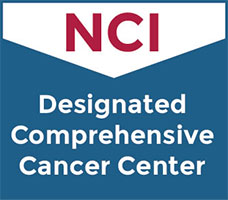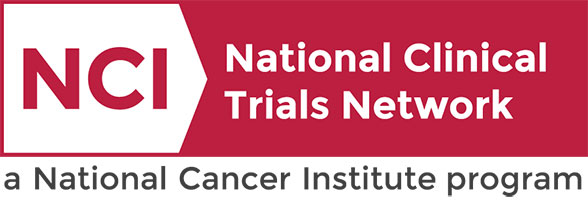Skip to main content
Malignant Mesothelioma
- Malignant mesothelioma is a disease in which malignant (cancer) cells form in the lining of the chest or abdomen.
- Being exposed to asbestos can affect the risk of malignant mesothelioma.
- Signs and symptoms of malignant mesothelioma include shortness of breath and pain under the rib cage.
- Tests that examine the inside of the chest and abdomen are used to diagnose malignant mesothelioma.
- Certain factors affect prognosis (chance of recovery) and treatment options.
Osteosarcoma and Malignant Fibrous Histiocytoma of Bone
- Osteosarcoma and undifferentiated pleomorphic sarcoma (UPS) of bone are diseases in which malignant (cancer) cells form in bone.
- Having past treatment with chemotherapy or radiation can increase the risk of osteosarcoma.
- Signs and symptoms of osteosarcoma and UPS include swelling over a bone or a bony part of the body and joint pain.
- Imaging tests are used to detect (find) osteosarcoma and UPS.
- A biopsy is done to diagnose osteosarcoma.
- Certain factors may affect prognosis (chance of recovery) and treatment options.
Non-Small Cell Lung Cancer
- Non-small cell lung cancer is a disease in which malignant (cancer) cells form in the tissues of the lung.
- There are several types of non-small cell lung cancer.
- Smoking is the major risk factor for non-small cell lung cancer.
- Signs of non-small cell lung cancer include a cough that doesn't go away and shortness of breath.
- Tests that examine the lungs are used to diagnose and stage non-small cell lung cancer.
- If lung cancer is suspected, a biopsy is done.
- Certain factors affect prognosis (chance of recovery) and treatment options.
- For most patients with non-small cell lung cancer, current treatments do not cure the cancer.
Small Cell Lung Cancer
- Small cell lung cancer is a disease in which malignant (cancer) cells form in the tissues of the lung.
- There are two main types of small cell lung cancer.
- Smoking is the major risk factor for small cell lung cancer.
- Signs and symptoms of small cell lung cancer include coughing and shortness of breath.
- Tests and procedures that examine the lungs are used to diagnose and stage small cell lung cancer.
- Certain factors affect prognosis (chance of recovery) and treatment options.
- For most patients with small cell lung cancer, current treatments do not cure the cancer.
Primary Liver Cancer
- Adult primary liver cancer is a disease in which malignant (cancer) cells form in the tissues of the liver.
- There are two types of adult primary liver cancer.
- Having hepatitis or cirrhosis can affect the risk of adult primary liver cancer.
- Signs and symptoms of adult primary liver cancer include a lump or pain on the right side.
- Tests that examine the liver and the blood are used to diagnose adult primary liver cancer.
- Certain factors affect prognosis (chance of recovery) and treatment options.
Lip and Oral Cavity Cancer Treatment (Adult)
- Lip and oral cavity cancer is a disease in which malignant (cancer) cells form in the lips or mouth.
- Tobacco and alcohol use can affect the risk of lip and oral cavity cancer.
- Signs of lip and oral cavity cancer include a sore or lump on the lips or in the mouth.
- Tests that examine the mouth and throat are used to diagnose and stage lip and oral cavity cancer.
- Certain factors affect prognosis (chance of recovery) and treatment options.
Chronic Lymphocytic Leukemia
- Chronic lymphocytic leukemia is a type of cancer in which the bone marrow makes too many lymphocytes (a type of white blood cell).
- Leukemia may affect red blood cells, white blood cells, and platelets.
- Signs and symptoms of chronic lymphocytic leukemia include swollen lymph nodes and feeling tired.
- Tests that examine the blood are used to diagnose chronic lymphocytic leukemia.
- Certain factors affect treatment options and prognosis (chance of recovery).
Acute Myeloid Leukemia
- Adult acute myeloid leukemia (AML) is a type of cancer in which the bone marrow makes a large number of abnormal blood cells.
- Leukemia may affect red blood cells, white blood cells, and platelets.
- There are different subtypes of AML.
- Smoking, previous chemotherapy treatment, and exposure to radiation may affect the risk of AML.
- Signs and symptoms of AML include fever, feeling tired, and easy bruising or bleeding.
- Tests that examine the blood and bone marrow are used to diagnose AML.
- Certain factors affect prognosis (chance of recovery) and treatment options.
Acute Lymphoblastic Leukemia
- Adult acute lymphoblastic leukemia (ALL) is a type of cancer in which the bone marrow makes too many lymphocytes (a type of white blood cell).
- Leukemia may affect red blood cells, white blood cells, and platelets.
- Previous chemotherapy and exposure to radiation may increase the risk of developing ALL.
- Signs and symptoms of adult ALL include fever, feeling tired, and easy bruising or bleeding.
- Tests that examine the blood and bone marrow are used to diagnose adult ALL.
- Certain factors affect prognosis (chance of recovery) and treatment options.
Laryngeal Cancer Treatment (Adult)
- Laryngeal cancer is a disease in which malignant (cancer) cells form in the tissues of the larynx.
- Use of tobacco products and drinking too much alcohol can affect the risk of laryngeal cancer.
- Signs and symptoms of laryngeal cancer include a sore throat and ear pain.
- Tests that examine the throat and neck are used to help diagnose and stage laryngeal cancer.
- Certain factors affect prognosis (chance of recovery) and treatment options.
Subscribe to


